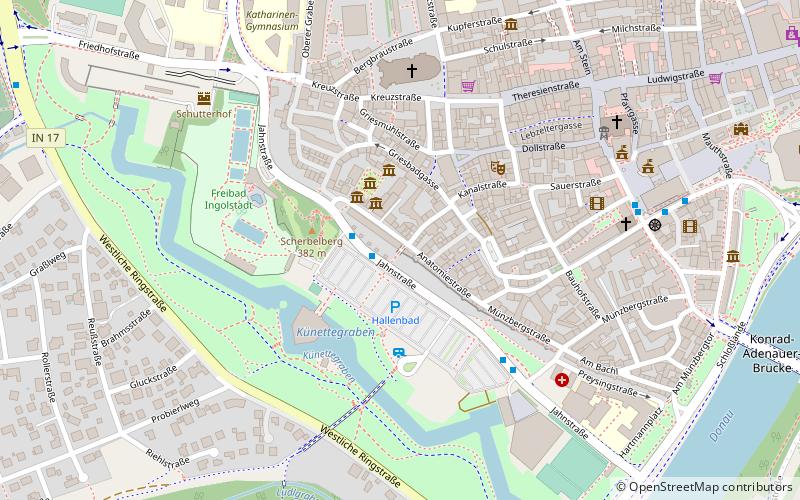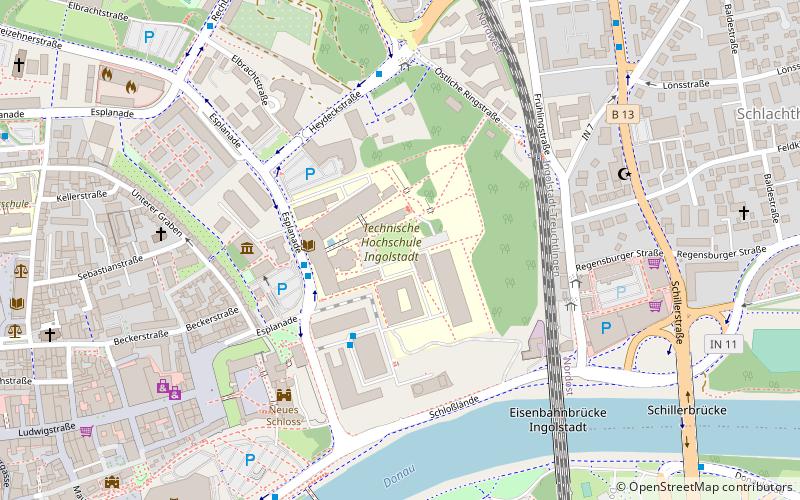Taschenturm, Ingolstadt


Facts and practical information
The Taschenturm, more rarely also Taschentorturm, is a side gate of the Ingolstadt city wall. It was built in 1390 as part of the city expansion, which took place in the second half of the 14th century. The name of the five-story building probably comes from the use of roof pockets for the gable roof that extends between the staircase gables.
Besides the Münzbergtor, which is located directly on the Danube, the Taschenturm, which is located further north, was for a long time the only outlet on the southwest side of the second city wall, which is still largely preserved today. In addition, the Taschenturm is the highest gate of the city wall. However, during the expansion of the Ingolstadt fortress in the 16th century, it was not provided with a bulwark. In the classicist fortress, the still preserved Fronte Preysing was placed in front of the Taschenturm.
Over the centuries, the Taschenturm was used as an executioner's residence and as a city prison. During the witch hunts at the end of the 16th century, there were numerous tortures in the Taschenturm, which were also witnessed by the later Bavarian Elector Maximilian I, who complained to his father, Wilhelm V, about the lax methods used during the interrogations in Ingolstadt.
The former bridge of the Pocket Tower, which spanned the moat that enclosed the entire city fortification, no longer exists.
Ingolstadt
Taschenturm – popular in the area (distance from the attraction)
Nearby attractions include: Kreuztor, Saturn Arena, Neues Schloss, Bavarian Army Museum.
Frequently Asked Questions (FAQ)
Which popular attractions are close to Taschenturm?
How to get to Taschenturm by public transport?
Bus
- Taschenturm • Lines: 15, 30, 40, 44, 45, 52, 60, 65, 9221/21, 9226, N11, N15 (1 min walk)
- Christoph-Scheiner-Gymnasium • Lines: 15, 21, 30, 40, 44, 45, 52, 60, 65, 9221/21, 9226, N11, N15 (4 min walk)
Train
- Ingolstadt Nord (25 min walk)











